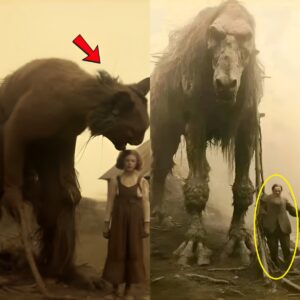A recent archaeological find in the remote Altai Mountains on the border between Russia, Mongolia and China has sparked unprecedented historical and scientific debate. A team of researchers led by Swedish archaeologist Lars Edvardsson has discovered what appears to be a series of colossal swords buried nearly 20 metres underground. These massive weapons, with an average length of 4.5 metres and an estimated weight of over 200 kilograms, are of unknown manufacture that defies conventional explanations.

The discovery was made during an expedition in June 2024, using an advanced ground-penetrating radar designed to explore archaeological remains in hard-to-reach areas. The swords were located in an area surrounded by monolithic structures that researchers believe to be an ancient ceremonial field or even a collective burial site. The inscriptions on the swords, engraved in an unknown language, show symbols and patterns reminiscent of ancient mythological texts recounting the existence of giants.
The discovery of these swords has reopened old rumours and theories about the existence of giants in ancient times. However, what intrigues researchers most is the complete absence of bone remains. Over the years, stories have circulated of discoveries of gigantic bones in different parts of the world, from North America to Africa, but they always mysteriously disappear before being scientifically studied.
Professor Edvardsson suggested a controversial hypothesis: “It is possible that these bones were deliberately removed by ancient societies or even by modern agents seeking to cover up evidence of unknown civilizations.” Other, more skeptical archaeologists argue that the swords could have been ceremonial and were not necessarily associated with giant beings, but with unknown ritual practices.
The swords, made from a metal alloy that has not yet been fully identified, have a sharp edge that appears to have remained intact over millennia. This has led experts to speculate that the technology used to make them far exceeded the capabilities of any known civilization of the time. Preliminary dating evidence places the origin of these weapons between 2,000 and 3,000 years before Christ.
One of the swords, which researchers dubbed “The Colossal,” contains a hilt adorned with inlaid obsidian and amber—materials not native to the region—suggesting a global trade or cultural network. Additionally, the precise alignment of the swords on the ground seems to indicate some sort of astronomical pattern, reinforcing the idea that these artifacts were tied to beliefs or rituals of great importance.
The discovery has attracted experts from different disciplines, from historians and linguists to geologists and physicists. Some of the boldest theories include the possibility that the giants may have actually existed as an unknown human subspecies, whose disappearance was caused by climatic factors, disease or even conflict with modern humans.
On the other hand, skeptics suggest that these weapons could have belonged to a lost advanced civilization, whose technological secrets have faded over time. However, the similarities between the swords and descriptions of colossal weapons in mythologies such as Norse, Hindu and Mesopotamian have generated renewed interest in analyzing ancient texts in search of additional clues.
Photographs of the discovery
- Colossal swords lined up on the excavated ground , with visible details of the inscriptions and decorative patterns.
- Close-up of an ornate hilt , showing the exquisitely designed amber and obsidian inlays.
- Panoramic view of the archaeological site , highlighting the remote location and surrounding monolithic structures.









